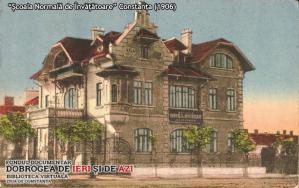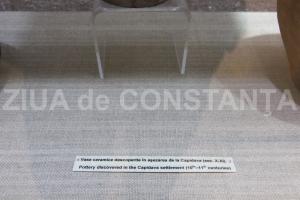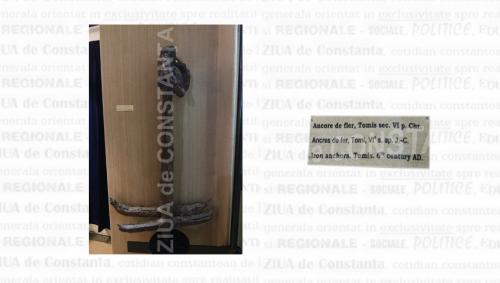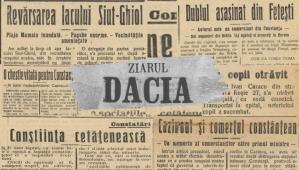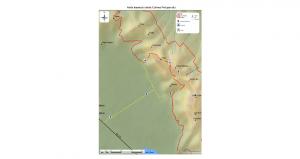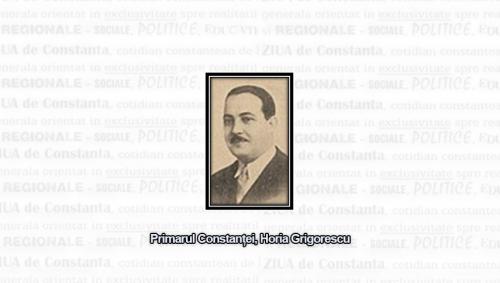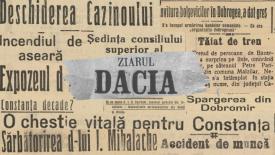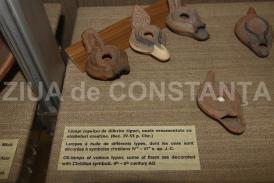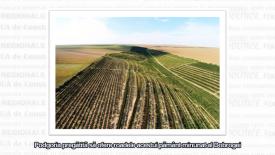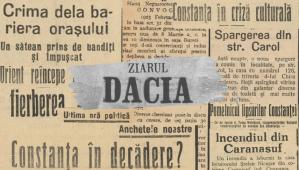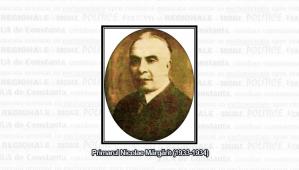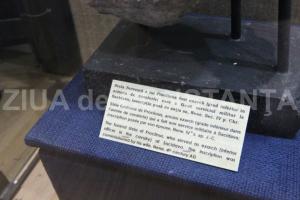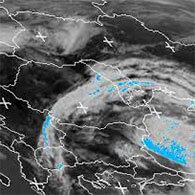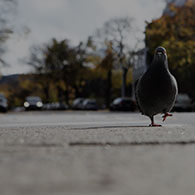#DobrogeaAcademică Premiate de Academia Română, două dintre cărţile de Istorie poartă recenzia unui istoric constănţean
12 Dec, 2020 00:00
12 Dec, 2020 00:00
12 Dec, 2020 00:00
ZIUA de Constanta
 4356
Marime text
4356
Marime text
 4356
Marime text
4356
Marime text

Aşa cum cititorii noştri au luat cunoştinţă, în urmă cu câteva zile, din paginile ziarului – în cadrul proiectului #DobrogeaAcademică, ce „are ca obiectiv conectarea comunităţii dobrogene la cel mai înalt for al intelectualităţii româneşti - Academia Română” –, la Secţia „Ştiinţe Istorice şi Arheologie” al înaltului for academic au fost premiate cărţi apărute pe anul 2018, prin acordarea a opt premii, fiecare dintre ele purtând numele unuia dintre corifeii naţionali ai ştiinţei umaniste tutelate de Musa Clio – Vasile Pârvan, Dimitrie Onciul, George Bariţiu, Nicolae Iorga,. Nicolae Bălcescu, A.D. Xenopol, Mihail Kogălniceanu, Eudoxiu Hurmuzaki.
Două dintre aceste cărţile premiate, pe anul de apariţie 2018, au fost acordate unor cunoscuţi istorici din Republica Moldova, şi ambele au fost recenzate şi de către un istoric constănţean, apropiat colaborator al nostru – profesorul Stoica Lascu.
Astfel, volumul Ȋn componenţa României Întregite. Basarabia şi basarabenii de la Marea Unire la notele ultimative sovietice, semnat de cercetătorul Nicolae Enciu, de la Institutul de Istorie al Republicii Moldova, căruia i s-a acordat Premiul „A.D. Xenopol”, a fost prezentat în paginile prestigioasei reviste de profil a Academiei Române – „Revue Roumaine d’Histoire”, Tome LVIII, Nos. 1-4, 2019, pp. 191-194:
NICOLAE ENCIU, ÎN COMPONENȚA ROMÂNIEI ÎNTREGITE. BASARABIA ȘI BASARABENII DE LA MAREA UNIRE LA NOTELE ULTIMATIVE SOVIETICE [Part of Greater Romania. Bessarabia and the Bessarabians from the Great Union to the Soviet Ultimatum Notifications] (Romanian Academy, Iași Institute of Archaeology, Carol I Museum of Brăila), Bucharest-Brăila: Editura Academiei Române, Editura Istros a Muzeului Brăilei Carol I, ([Series] Basarabica 7. Editors: Victor Spinei and Ionel Cândea), 2018, 544 pp.; tables.
The historical research regarding our conationals living on the other side of the Prut River has been conducted very rigorously1 from a methodological point of view, by using a highly professional approach, which, in my opinion, is similar to that implied in Romania, based on real and assumed professionalism. For example, on the back of the present volume,2 there is the following inscription: “Work discussed at the Contemporary History Section, History Institute of the Moldovan Academy of Sciences (January 11, 2018) and recommended for publishing by the
Scientific Council of the History Institute of the Moldovan Academy of Sciences (January 25).”
It was printed as part of a recently initiated collection that has already acquired prestige among publishers and history lovers, coordinated by the Romanian scholars Victor Spinei and Ionel Cândea. The collection is called Basarabica, and there are 11 volumes that have appeared in it so far. We would like to mention them in this context, because they observe the scientific standards of the Romanian Academy.3
In this sense, the volume of Professor Enciu (born in Câșlița-Prut/Cahul County on March 15, 1960), a prolific contemporary historian from Kishinev, is structured according to the scientific canons of an authentic research work: Cuvânt către cititori [To My Readers] (pp. 11–19), Mulțumiri [Acknowledgments] (pp. 21–22), Abrevieri [Abbreviations] (pp. 23–24), seven chapters (pp. 25–411), and În loc de încheiere, sau “veacul de aur” al Europei de Est [Instead of an End, or the “Golden Age” of Eastern Europe] (pp. 413–24), Lista tabelelor [List of Tables] (pp. 425–29), Eseu bibliografic [Bibliographic Essay] (pp. 431–62), Cronologie [Chronology] (pp. 463–506), Anexe [Annexes] (pp. 507–39), Rezumat [Summary] (pp. 541–42), as well as Enciu, Nicolae [Bio-bibliography] (p. 543).
We would like to show here that the bibliographic essay is, in fact, a true “historiographical study,” extremely important especially for the Romanian readers everywhere, interested in the historiography referring to interwar Bessarabia. It is interesting to see the way in which the author presents and appreciates the situation in the “Soviet period today, when the synthesis of the interwar history of Bessarabia raises only a purely bibliographic or factual interest, the reader having to choose between total confidence and deep suspicion regarding any work that appeared between 1944 and 1985.” Elaborated in a strictly doctrinal key, the synthesis of the history of interwar Bessarabia is based on an abstract scheme about an alleged “struggle of the working class of Bessarabia, for the liberation and reunion with the Soviet homeland” (p. 438).
The author points out that in discussions, “The historical research of the first half of the twentieth century frequently uses the terms ‘development,’ ‘progress,’ and ‘modernization.’ By these, researchers designate an upward, quantitative, and qualitative evolution. They may present isolated aspects, but most often and conclusively, they capture the interconnections in society, as a possibility of fulfillment, offering the most significant elements for appreciating the civilization stage of society” (pp. 15-16). Starting from the “five essential hypostases” of these topics, the author shows in the Cuvânt către cititori [To My Readers] that “this study assigns the concepts of development and progress to the value of historical-economic, social, political, and cultural accumulations. It regards modernization as the acceptance of connection and integration into the new, according to the rhythm and direction of European and global evolution of human civilization” (p. 16). The author also informs the reader about the solutions he suggests as part of the scientific effort to reconstruct, based on documents and specialized literature, the evolution of Moldavia beyond the Prut River during the interwar period. “Without claiming nor striving towards exhaustiveness, the present study aims to give readers a more truthful and objective overview on the interwar period in the history of Bessarabia, based on the analysis of original documents and archive materials, statistics, syntheses, monographs, and studies presented in the bibliographic essay accompanying the paper, as well as in the footnotes of the text. At the same time, in an attempt to synthesize our interests in the interwar period, this study also included a part of the results of the investigations published over time, especially regarding the demographics of the population of Bessarabia and the elements of European modernity in the interwar period of Bessarabia” (p. 17).
After reading this volume4 that comprises numerous documents, statistical tables, and other testimonies concerning this period, the reader remains with a clear impression on the progress and modernity in the evolution of the Romanian counties between the Prut and the Dniester rivers during the analyzed period, in the context of the respective international confrontations.The author concludes as follows: “Nevertheless, our entire exposition is based on the philosophy of historical optimism as a dominant of the interwar period. As stated in published literature, the attitudes in the two parts of the European continent, i.e. Western Europe and Central-South-Eastern Europe, presented many particularities after the First World War. One of them consisted in the fact that while in the West, the moral-creative tone was expressed in the feeling of decadence, e.g. Oswald Spengler (1880–1936) in his famous work The Decline of the West, in Central-South-Eastern Europe, historical optimism was more dominating. This was due to the fact that the national energy that had been channeled into the struggle for liberation and national unity before 1918 could be directed towards constructivism and creativity in all sectors of modern society” (p. 541).
Finally, the author states: “Occasioned by the celebration of a century since the Great Union of 1918, this work is intended to be a brief overview on the achievements of national historiography in the study field pertaining to the interwar period in Bessarabia’s history, along with numerous other attempts made by historians investigating an ever-instructive and current historical period in the recent years” (p. 541).
Iar amplul volum Legaţia română la Petrograd (1914-1918). Documente. La Légation roumaine à Pétrograd (1914-1918). Documents, editat de istoricii chişinăuieni Gheorghe E. Cojocaru şi Eugen-Tudor Sclifos, de la acelaşi Institut, căruia li s-a acordat Premiul „Eudoxiu Hurmuzaki”, a fost prezentat, în iulie 2020, în cadrul unei manifestări ştiinţifice organizate sub sub egida Arhivelor Militare Naţionale; redăm pentru cititorii noştri conţinutul – din cadrul materialului mai amplu Sursele arhivistice – la temelia lucrărilor istoricilor transpruteni de azi – referitor la volumul recent premiat de Academia Română:
Gheorghe E. Cojocaru, Eugen-Tudor Sclifos (eds.), Documente privind istoria românilor. Colecţia Eudoxiu Hurmuzaki. Seria a 3-a [Coordonatori: Victor Spinei, Ionel Cândea]. Vol. I: Legaţia Română la Petrogard (1914-1918). Documente. La Légation Roumaine à Pétrograd (1914-1918). Documents. Éditeurs:..., Editura Academiei Române, Editura Muzeului Brăilei „Carol. I”, Bucureşti – Brăila, 2018 /522 pp.; il./.
Conţinutul propriu-zis al volumului – recte, documentele respective – este compus din: La Grande Guerre vue du versant oriental. II.L’entrevue de Constantza (pp. 425-433) /publicat în „Revue des Deux Mondes”, Janvier 1927/; La Grande Guerre vue du versant oriental. Ma mission en Russie 1914-1918. I.La tragédie d’une conscience royale (p. 433-457) /„Revue des Deux Mondes”, novembre-décembre 1930/; Cum s-a negociat harta României Mari (pp. 457-472); Amintiri din viaţa diplomatică. I.În drum spre temniţa din Petropavlosk (pp. 472-481) /în „Cuget Românesc”, februarie 1922/; Memoriu relativ la arestarea personalului legaţiunii de către guvernul comisarilor poporului (pp. 481-484) /M. Arion, din Fond Casa Regală/; O noapte şi două zile la fortăreaţa Petru şi Pavel (pp. 484-488) /Fond 71/URSSS/; Două zile şi două nopţi la „PetroPavlosk” (31 decembrie 1917-2 ianuarie 1918) (pp. 488-490) /Zarifopol, Fond 71/URSS/; Joseph Noulens: Ambasador în Rusia Sovietică (pp. 490-495); Le Cinquantenaire d’une faute (pp. 495-504) /Constantin Diamandy, în „Revue des Vivantes”, juin 1927/.
Partea documentară este precedată de amplul studiu (peste o sută de pagini) al profesorului Victor Spinei – Colecţia de documente Hurmuzaki: antecedente, geneză concretizări –, el însuşi operă, în sine, doct şi foarte documentat, subsegmentat tematic: Aspecte terminologice, Definirea conceptului de izvor/sursă, Parametrii interpretării izvorului, Inserări de izvoare în literatura istorică timpurie, Marile colecţii de izvoare europene, Primele tentative de editare a izvoarelor în spaţiul românesc, Eudoxiu Hurmuzaki: Repere biografice, Valorificarea editorială a travaliului cărturăresc al lui Eudoxiu Hurmuzaki, Volumele din prima serie a Colecţiei Hurmuzaki, Andrei Oţetea: Repere biografice, Reactivarea Colecţiei Hurmuzaki de către Andrei Oţetea.
Aşa cum arată cei doi editori ai noii serii a colecţiei iniţiate de românul bucovinean Eudoxiu Hurmuzaki, „În culegerea de faţă au fost incluse documentele identificate în fondul personal C. Diamandy şi cel al «Casei Regale», aflate în custodia Arhivelor Naţionale Istorice Centrale, precum şi documente din fondurile arhivelor diplomatice ale României. Acestea cuprind intervalul anilor 1914-1917, până către luna ianuarie a anului 1918, subscriind unei perioade extrem de agitate, pline de turbulenţe, dificultăţi şi drame pentru poporul român. Cea mai mare parte a documentelor o reprezintă corespondenţa dintre Constantin Diamandy şi primul ministru Ion I.C. Brătianu, iar o mică parte conţine notele adresate ministrului de externe Emanoil Porumbaru (1914-1916) şi lui Take Ionescu (viceprim-ministru – iulie 1917-ianuarie 1918). De asemenea, au fost inserate traduceri din numeroase ziare ruseşti cu privire la poziţia Rusiei faţă de România în anumite faze ale evoluţiei raporturilor lor bilaterale, care oferă un plus de informaţie asupra unor momente-cheie în procesul de negocieri din anii neutralităţii, precum şi rapoarte ale consulului român la Moscova, ca şi unele rapoarte de interes ale legaţiilor române la Stockholm, Berna etc.” (pp. CXXX-CXXXI).
Cele 689 de documente (aici sunt incluse şi extrase din ziare apărute în anii respectivi) se constituie în preţioase atestări istorice, meritul editorilor (autori şi a notelor de subsol – unele redate în română, altele în franceză) trebuind a fi consemnat şi apreciat ca atare. Acest volum se constituie într-o materializare de bun augur pentru Istoriografia română – exprimând nădejdea în apariţia, în ritm alert, a următoarelor tomuri.
Citește și
#DobrogeaAcademică. 102 ani de la Unirea Bucovinei (28 noiembrie 1918) „Cel dintâiu gând al Bucovinei dezrobite se îndreaptă către Regatul României, de care întotdeauna am legat nădejdea dezrobirii noastre”
1 Here, we are referring to scientific works; originally, most of them were subjects of serious doctoral theses.
2 This is a situation that is similar to all academic volumes, especially if the title sheet specifies the name of a patron institution.
3 I. Guceac, Constituția la răscruce de milenii, Bucharest–Brăila, 2016, 534 pp.; V. Mischevca,
Geneza problemei basarabene – 1812, Bucharest–Brăila, 2017, 368 pp.; V. Popovschi, Biroul de
organizare al Sfatului Țării (27 octombrie–21 noiembrie 1917) / Republica Democratică Moldovenească (Formarea și evoluția. 1917–1918), Bucharest–Brăila, 2017, 368 pp.; S. Cornea, Organizarea teritorială a puterii locale în Republica Moldova: concept, mecanisme, soluții, Bucharest-Brăila, 2017, 614 pp.; V. Țvircun, Dimitrie Cantemir – Repere biografice, Bucharest–Brăila, 2017, 374 pp.; I. C. Spinei, Figuri proeminente de preoți din Basarabia (1700–1939), Bucharest–Brăila, 2017, 520 pp.; N. Enciu, În componența României Întregite. Basarabia și basarabenii de la Marea Unire la notele ultimative sovietice, Bucharest–Brăila, 2018, 544 pp.; A. Eșanu and V. Eșanu, Lumina cărții la români (secolele XIV–XIX). Studii, surse și materiale, Bucharest–Brăila, 2018, 660 pp.; I. Chirtoagă, Estul spațiului românesc în perioada medievală și începutul celei moderne. Studii și documente, Bucharest-Brăila, 2018, 588 pp.; Gh. Duca and F. Macaev, Compounds and Materials for Drug Development and Biomedical Applications, Bucharest–Brăila, 2018, 310 pp.; A. Nour, Scrisori și amintiri din Basarabia, 2019, Bucharest–Brăila, 510 pp.
Geneza problemei basarabene – 1812, Bucharest–Brăila, 2017, 368 pp.; V. Popovschi, Biroul de
organizare al Sfatului Țării (27 octombrie–21 noiembrie 1917) / Republica Democratică Moldovenească (Formarea și evoluția. 1917–1918), Bucharest–Brăila, 2017, 368 pp.; S. Cornea, Organizarea teritorială a puterii locale în Republica Moldova: concept, mecanisme, soluții, Bucharest-Brăila, 2017, 614 pp.; V. Țvircun, Dimitrie Cantemir – Repere biografice, Bucharest–Brăila, 2017, 374 pp.; I. C. Spinei, Figuri proeminente de preoți din Basarabia (1700–1939), Bucharest–Brăila, 2017, 520 pp.; N. Enciu, În componența României Întregite. Basarabia și basarabenii de la Marea Unire la notele ultimative sovietice, Bucharest–Brăila, 2018, 544 pp.; A. Eșanu and V. Eșanu, Lumina cărții la români (secolele XIV–XIX). Studii, surse și materiale, Bucharest–Brăila, 2018, 660 pp.; I. Chirtoagă, Estul spațiului românesc în perioada medievală și începutul celei moderne. Studii și documente, Bucharest-Brăila, 2018, 588 pp.; Gh. Duca and F. Macaev, Compounds and Materials for Drug Development and Biomedical Applications, Bucharest–Brăila, 2018, 310 pp.; A. Nour, Scrisori și amintiri din Basarabia, 2019, Bucharest–Brăila, 510 pp.
4 Nota bene: Although the author uses the syntagma România Întregită, the translation in the English abstract is Greater Romania, and not Entire/Integrated Romania.
Urmareste-ne pe Google News
Urmareste-ne pe Grupul de Whatsapp
Comentarii
 Fondul Documentar Dobrogea de ieri și de azi
Fondul Documentar Dobrogea de ieri și de azi




